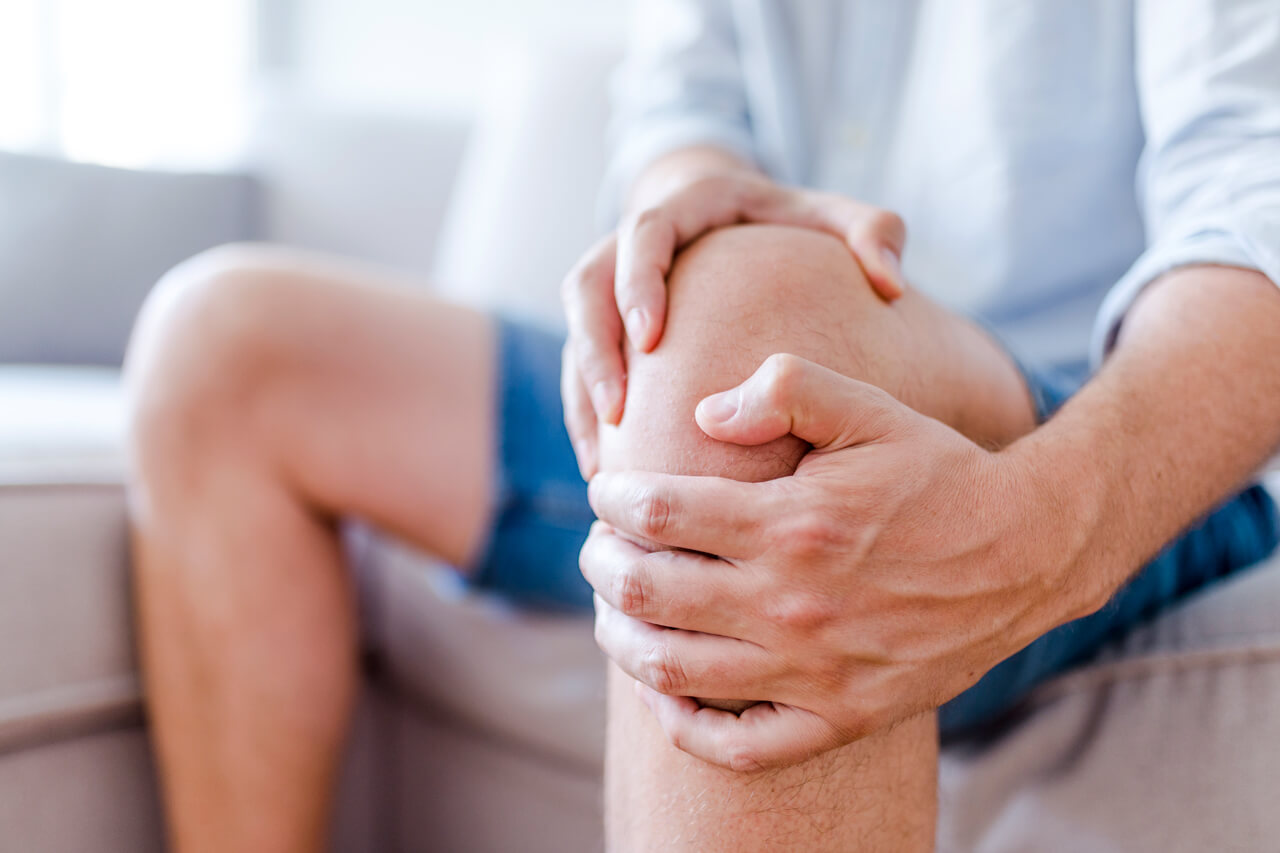Good news if you’re considering trying CBD oil for arthritis pain: There are some very promising studies that suggest cannabidiol (CBD) is effective for dulling pain and lowering inflammation. But before we dive into the research, let’s see what one of the most trusted arthritis organizations has to say about using CBD for arthritic pain.
According to The Arthritis Foundation (AF), “Animal studies have suggested that CBD has pain-relieving and anti-inflammatory properties [and] … Anecdotally, some people with arthritis who have tried CBD … report noticeable pain relief, sleep improvement and/or anxiety reduction.”
Is this a ringing endorsement of CBD for arthritis pain? Well, yes and no. For the AF to suggest CBD may alleviate pain and hyper-inflammation is in itself quite impressive.
That’s because CBD is unregulated by the US Food and Drug Administration (FDA), and has not has not been authorized or approved by the agency for the specific treatment of arthritis.
(The FDA has only approved a CBD-based drug treatment for two rare forms of epilepsy.)
To be fully transparent, the Arthritis Foundation adds two key points about using CBD as an analgesic (pain-reliever) remedy. The Foundation says that the successful animal studies have not been replicated in humans. Also, not everyone with arthritis who has used CBD has experienced relief.
But that doesn’t mean you should curb your enthusiasm when it comes to trying CBD oil for arthritis.
The key to using it successfully requires knowing what to look for when choosing a CBD product. (As soon as you’re done reading this article, read this one to learn how not to get ripped off when buying CBD oil. Hint: the Arthritis Foundation recommends the following: Buy from companies that test each batch and provide a certificate of analysis from an independent lab. Our Maryland-based CBD company does just that.)
Other factors for successfully using CBD oil for arthritis pain and inflammation include knowing how best to apply it as well as the proper dosage. Both of these topics will be covered below.
First, though, let’s take a look at that research …
CBD & Arthritis Research Studies
A peer-reviewed research article published in Cureus examined several studies on CBD for arthritis. Based on the studies, the co-authors conclude that CBD “has shown promise in arthritic animal models by attenuating pro-inflammatory immune responses.”
The study’s abstract continues, “Additional research has demonstrated the benefit of CBD in decreasing the endogenous [internal] pain response in mice subjected to acute arthritic conditions, and further studies have highlighted improved fracture healing following CBD use in murine mid-femoral fractures.”
Of course, mice aren’t the same as humans. Unfortunately, no large clinical trials have been conducted thus far. (Perhaps that’s because pharmaceutical companies can’t patent CBD, but that’s a subject for another day.)
The research study in Cureus referenced a study in which researchers successfully used a topical CBD application. Why topical and not, say, gummies or CBD pills? That’s because the researchers wanted to “avoid gastric diminution of the drug, hepatic first-pass metabolism, and to achieve greater plasma drug levels outright.”
In other words, the researchers wanted the CBD to act quickly, which necessitates bypassing the digestive system.
As for osteoarthritis, which is caused by the normal wear and tear of joints, the researchers referenced another study, in which CBD was shown to exert a prophylactic benefit “by a statistically significant reduction of … induced joint pain….”
The researchers concluded, “These data are promising and suggest a possible role in prolonging the time course of osteoarthritis, either to the onset of clinical symptoms or to the need for pharmacologic or operative intervention. Therefore, one practical application of cannabinoids including CBD is in the primary prevention of osteoarthritis, or in its preoperative use.”
As a result of these promising studies, the researchers noted that the orthopedic community has taken interest in CBD as a potential adjunct for musculoskeletal disease treatment, both in the preoperative and postoperative period.
How Does CBD Work For Arthritis?
In the review of research studies in Cureus, there were a couple specific mechanisms in which researchers believe CBD exerts a physiological effect on arthritis. First, CBD stimulated osteoblasts and collagen. Osteoblasts are cells that form new bone while collagen is the main structural protein in bone, skin and tissues in the body.
Another way in which CBD may work to alleviate arthritis, is that it increases the levels of endocannabinoid receptors, CBD1 and CBD2, in synovium, which is the connective tissue that lines the inside of the joint capsule. This suggests CBD targets pain and inflammation associated with both osteoarthritis and rheumatoid arthritis.
Does CBD Work For Rheumatoid Arthritis?
Speaking of RA, another study, this one published in Cell Death & Disease, called CBD a “killer for inflammatory rheumatoid arthritis,” owing to CBD’s ability to decrease chronic inflammation. RA, noted the researchers, is characterized by a hypoxic environment in the joint (low levels of oxygen) with concomitant mitochondrial dysfunction. CBD, it seems, helps normalize bodily function in this regard.
What’s The Best Way To Use CBD For Arthritis?
Everybody is different, thus there’s no single correct answer. But anecdotally speaking, many people have had success treating arthritis by using CBD oil sublingually (applying full-spectrum Drops under the tongue) both morning and night, and by using it topicall. You can mix a few drops of CBD oil with your pain-relief cream, salve, gel, etc. Apply the mixture directly to the afflicted area of the body.
How To Take CBD Oil & Best CBD Dosage For Arthritis
Max & Steven’s recommends taking the CBD Drops without food or drink. To better mix the carrier oil (MCT oil) with the CBD oil, shake the bottle. Start with a dosage of .25mL, which will be marked on the pipette (squeeze applicator). Place the CBD drops under your tongue and do your best to let the drops stay under your tongue for one full minute, then swallow.
If you experience no relief after a few days at the .25mL dosage, increase the amount to .5mL dosage. Repeat until you discover your optimal dosage, while also applying CBD oil topically as detailed above.
Biohacking (self-experimentation) is part and parcel of the CBD experience.
CBD Oil For Arthritis Pain: Is it Safe?
According to The Arthritis Foundation, “So far, no serious safety concerns have been associated with moderate doses” of CBD. The Foundation smartly recommends going “low and slow.” The Foundation actually recommends starting with a dosage of just a few milligrams, but in all likelihood that amount won’t relieve pain very effectively if you suffer from arthritic inflammation.
And to be extra cautious, speak to your doctor about CBD if you are currently taking medication. The Arthritis Foundation particularly recommends inquiring about drug interactions with CBD for those taking corticosteroids, antidepressants and medication for fibromyalgia.

